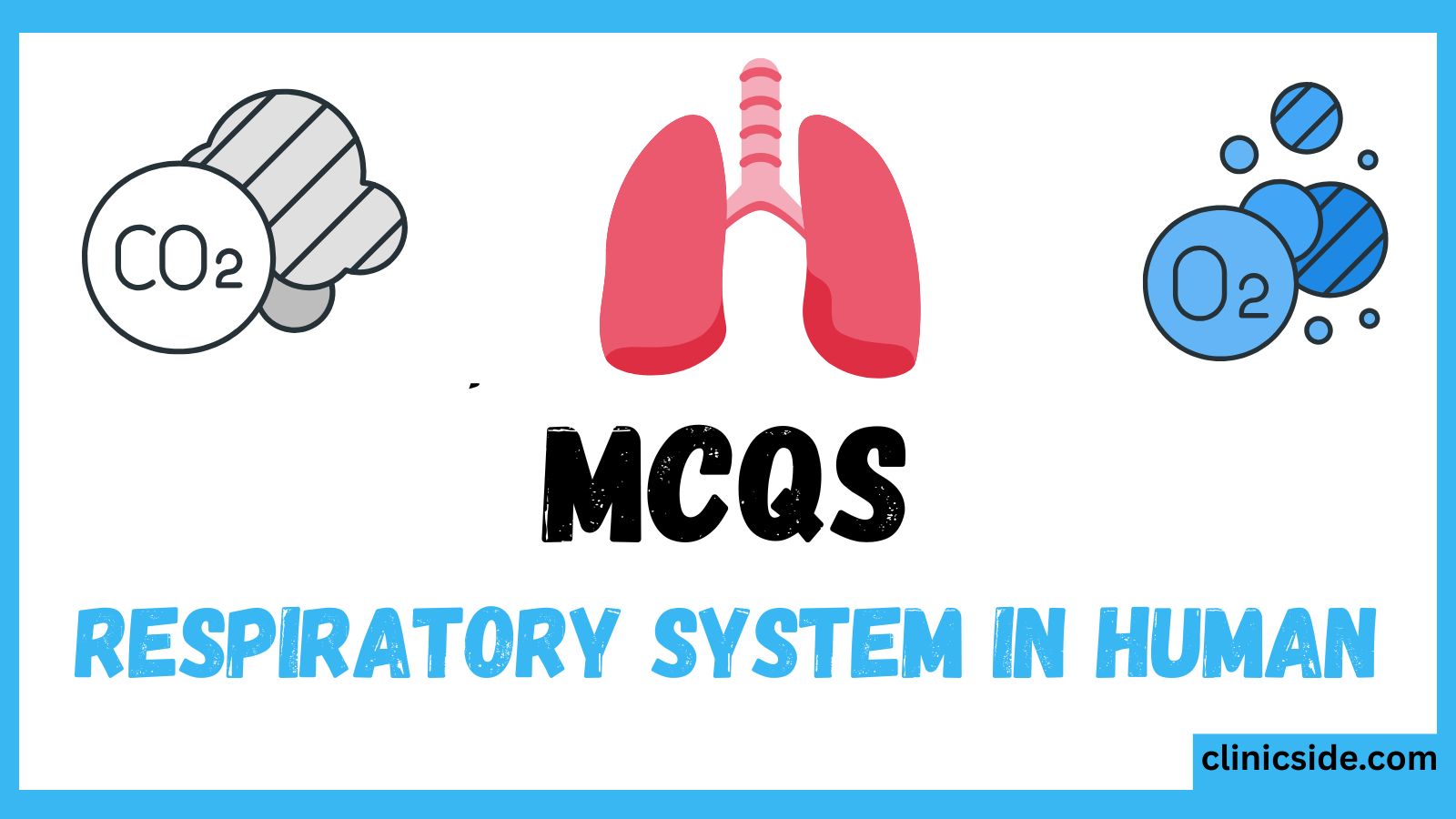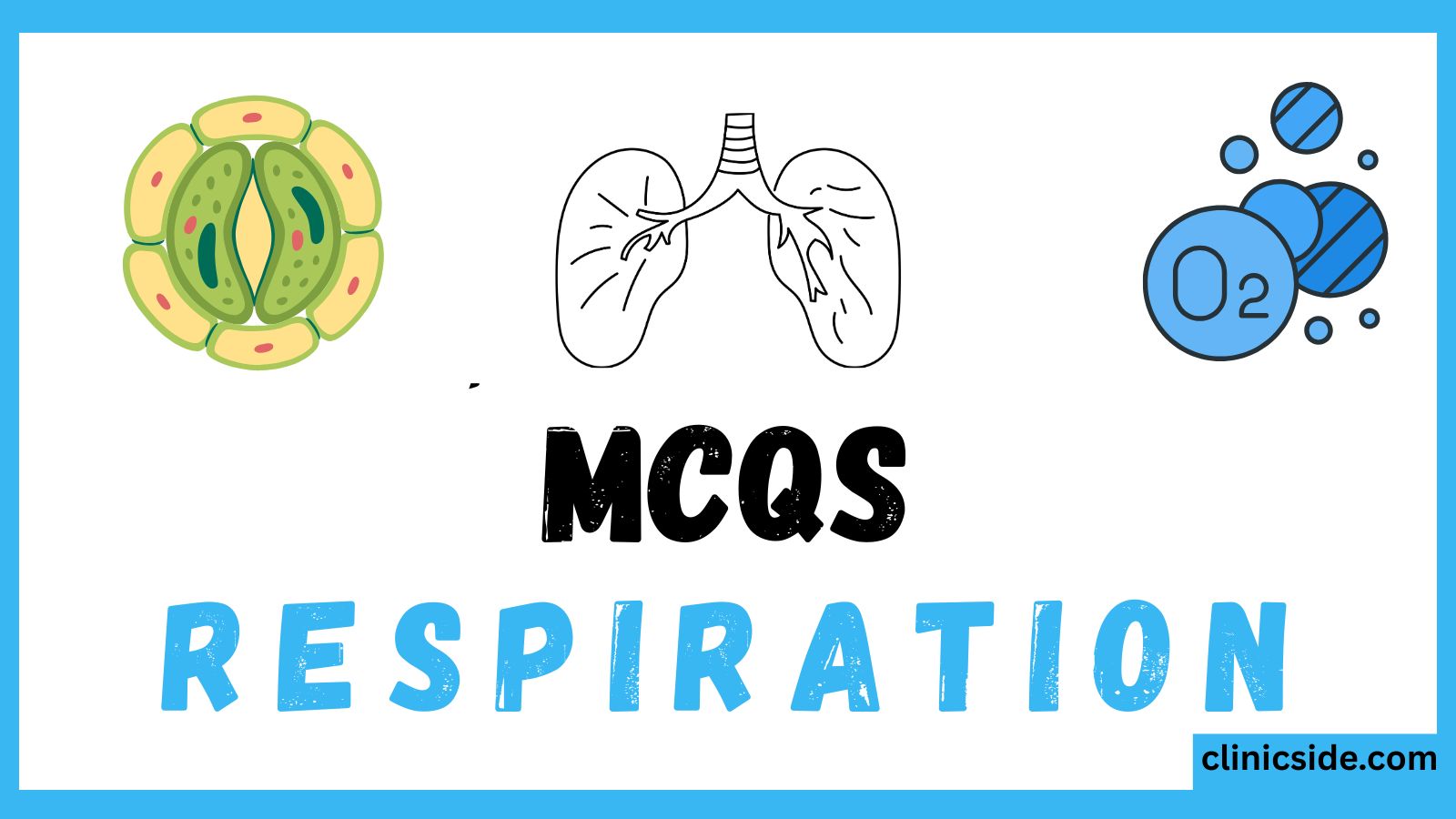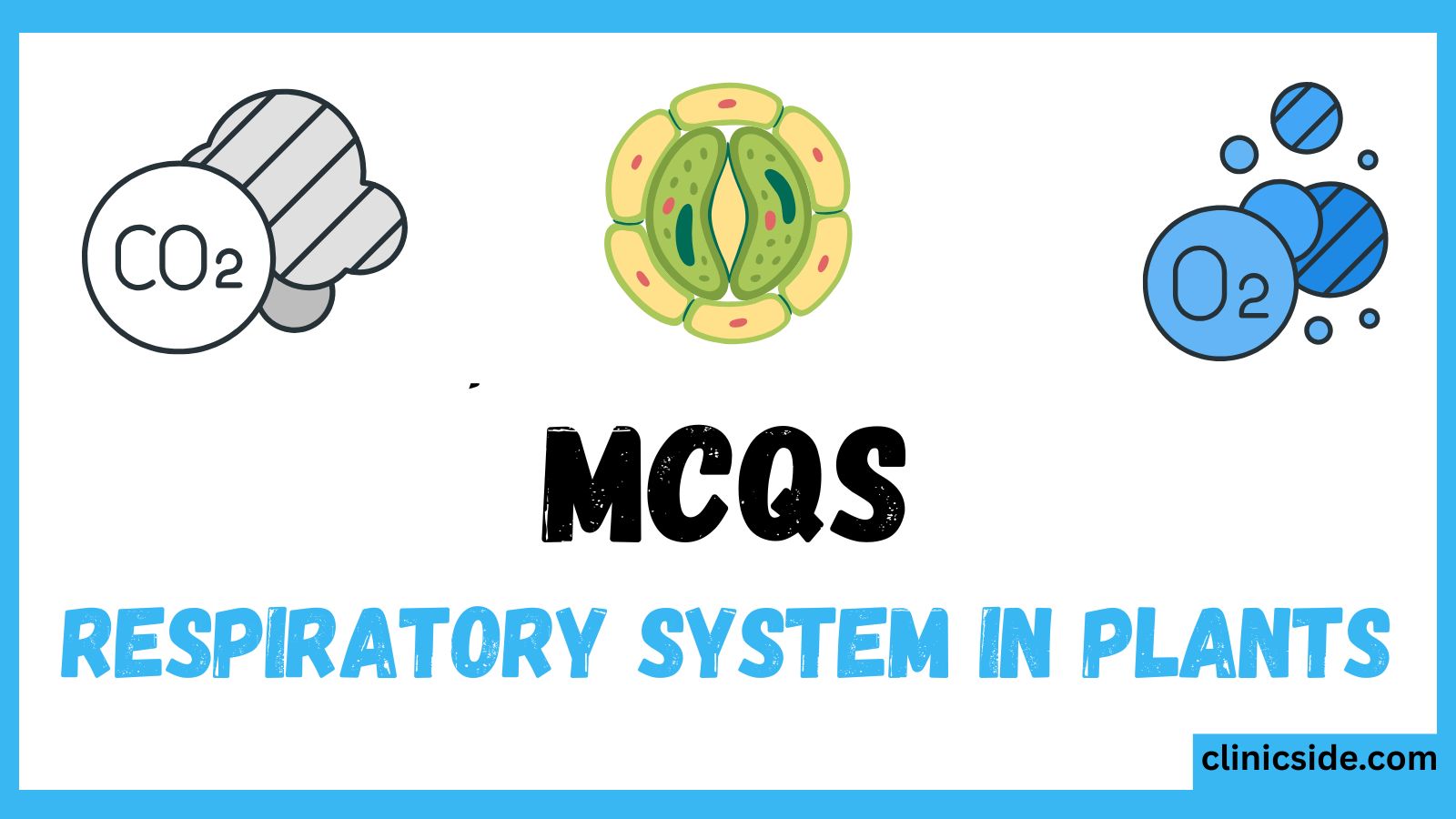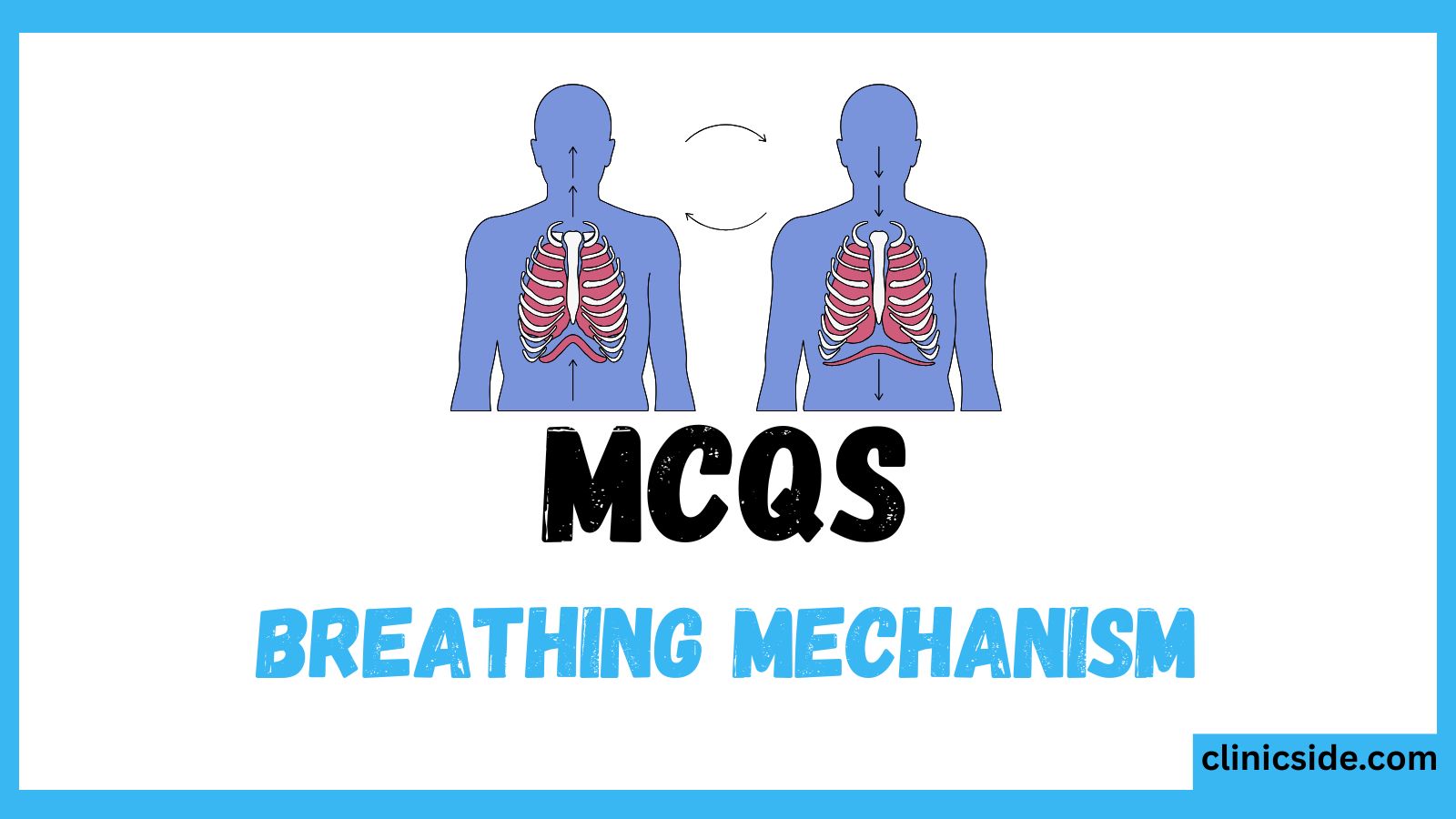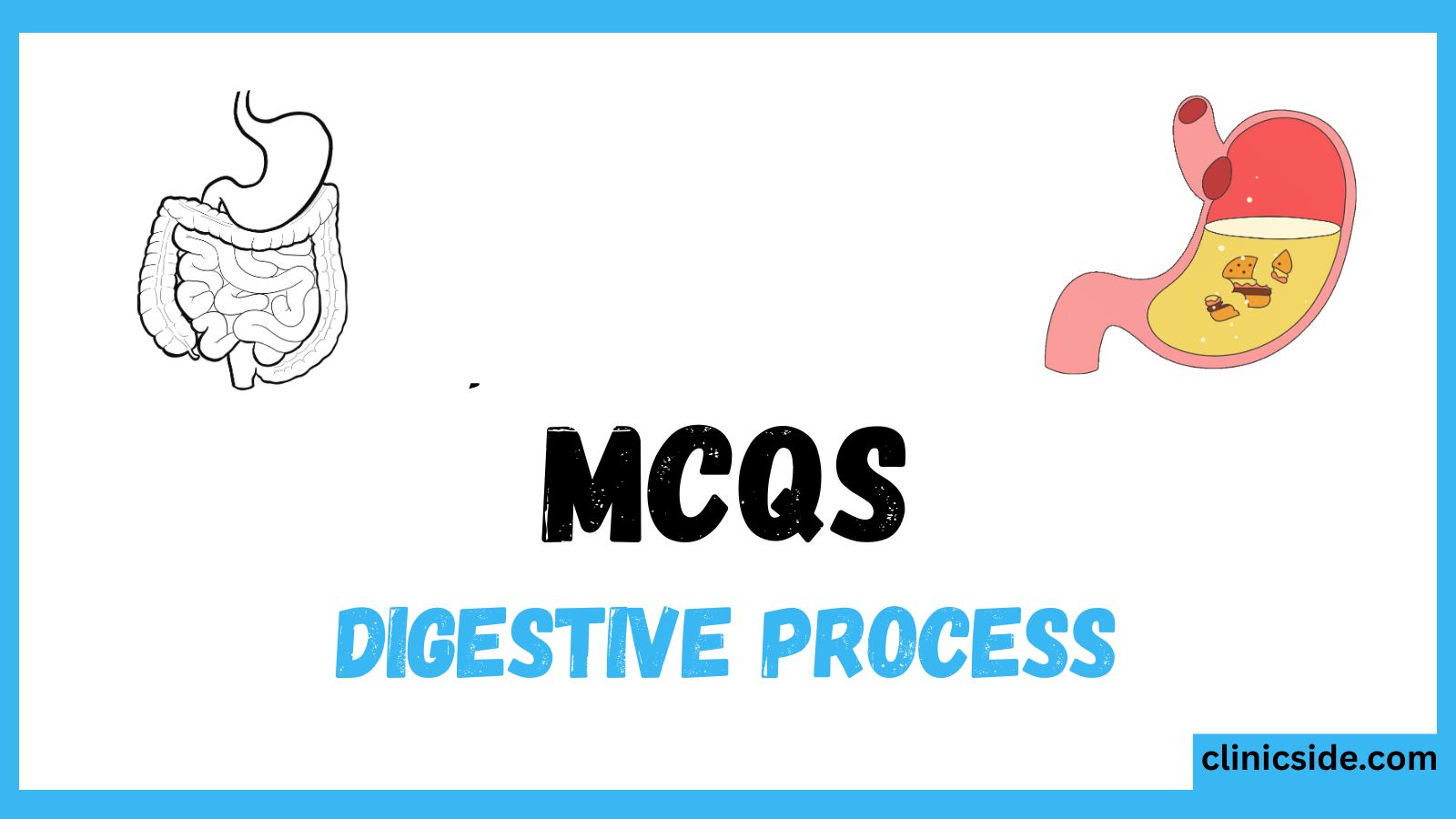Have you ever wondered how your body gets the oxygen it needs to survive or where the carbon dioxide goes when you breathe out? This is all thanks to your respiratory system. It’s one of the most important systems in your body, helping you breathe, talk, and even smell. Let’s dive into the structure and function of this amazing system in a simple and clear way according to the new curriculum.
Quiz
Available options: 1 to 20
What is the Respiratory System?
The respiratory system is a group of organs and tissues that help you breathe. It allows oxygen to enter your body and carbon dioxide to leave it. This exchange of gases is essential for your cells to produce energy.
Major Organs of the Respiratory System (Structure)
Here’s a breakdown of the main parts of the respiratory system from top to bottom:
1. Nose and Nasal Cavity
- Air enters through your nose or mouth.
- The nasal cavity filters, warms, and moistens the air.
- Tiny hairs called cilia trap dust and germs.
2. Pharynx (Throat)
- Acts as a passageway for air and food.
- Directs air into the larynx and lungs.
3. Larynx (Voice Box)
- Located below the pharynx.
- Contains the vocal cords that help you speak.
- Prevents food from entering the windpipe.
4. Trachea (Windpipe)
- A tube that connects the larynx to the lungs.
- Supported by C-shaped cartilage rings to keep it open.
5. Bronchi and Bronchioles
- The trachea splits into two bronchi, each leading to a lung.
- Bronchi further divide into smaller bronchioles inside the lungs.
6. Lungs
- Spongy organs where gas exchange takes place.
- Right lung has 3 lobes, left lung has 2 lobes to make room for the heart.
7. Alveoli
- Tiny air sacs at the end of bronchioles.
- Surrounded by capillaries for gas exchange.
- Oxygen goes into blood; carbon dioxide leaves the blood.
8. Diaphragm
- Dome-shaped muscle under the lungs.
- Helps you inhale and exhale by moving up and down.
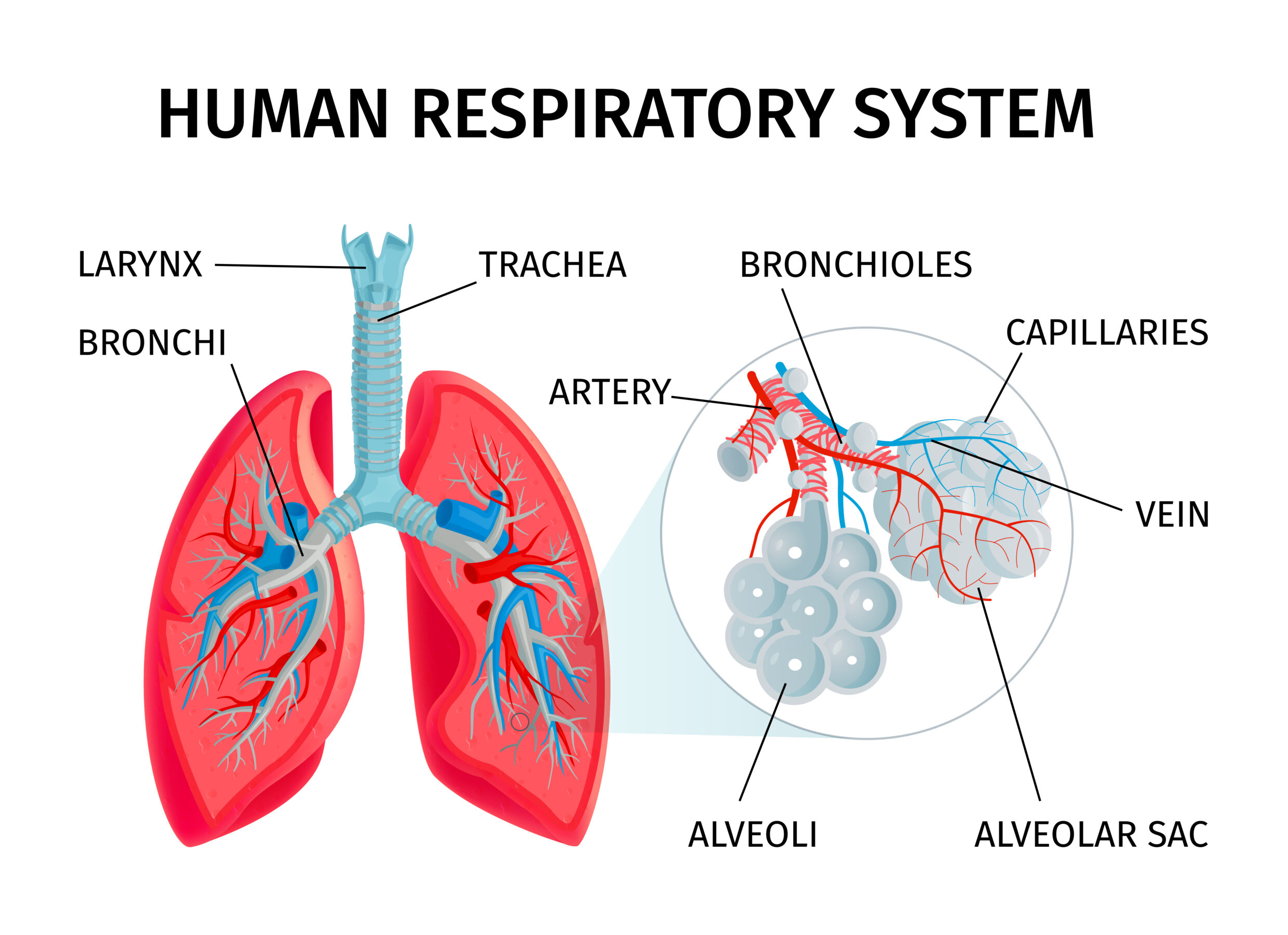
How Does the Respiratory System Work? (Function)
Let’s break it into simple steps:
Step 1: Inhalation
You breathe in. The diaphragm contracts (moves down), the chest cavity expands, and air enters your lungs.
Step 2: Gas Exchange
Inside the alveoli, oxygen from the air passes into your bloodstream, and carbon dioxide from your blood moves into the alveoli.
Step 3: Exhalation
The diaphragm relaxes (moves up), pushing carbon dioxide-rich air out of the lungs through your nose or mouth.
Functions of the Respiratory System
| Function | Description |
|---|---|
| Oxygen Supply | Provides oxygen to blood for energy production |
| Carbon Dioxide Removal | Removes waste gas from the body |
| Speech Production | Helps create sound using the vocal cords |
| Olfaction (Smell) | Helps you smell through nasal cavity |
| Filter and Protect | Traps dust and pathogens |
Final Thoughts
The respiratory system is your body’s oxygen delivery system. From the nose to the lungs, every part has a role in keeping you alive and full of energy. Understanding its structure and function helps you see how your body works like a finely tuned machine breathing in fresh air and breathing out waste.

